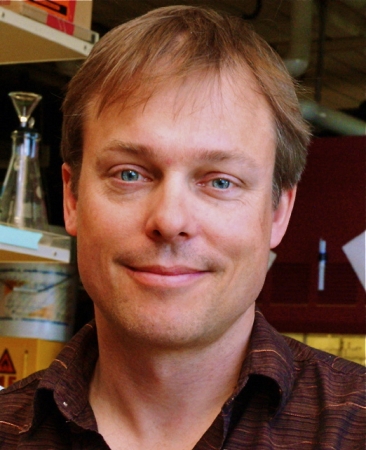The findings of research studies conducted at the lab of James E. Hutchison from the University of Oregon utilizing small-angle X-ray scattering and high-precision microscopy techniques will be helpful in using green chemistry in nanotechnology in order to improve efficiency and yield, and significantly decrease waste and risk to environment and human health.
 James E. Hutchison
James E. Hutchison
According to Hutchison, the study on the dynamics of nanoparticles using small-angle X-ray scattering has revealed the possibility of lowering the concentration of gold used for growing nanoparticles, while eliminating the pathway, aggregation or coalescent. The reduced concentrations of the precursor that produces the nanoparticles virtually shut down the particles’ ability to aggregate together, thereby preventing size variations in the preferred end product.
In another study reported in ACS Nano, Hutchison’s team investigated the transition of silver nanoparticles coated over smart grids or chemically modified grids and common objects such as copper jewelry and silverware, using transmission electron microscopy. The team discovered that all forms generate silver nanoparticles, which may reach the environment, particularly through light, water and humid air.
Hutchison informed that nanotechnology may have several beneficial applications, but they are only beneficial when the net benefits offset the harmful implications for the environment and human health.
Hutchison further said that these novel analyzing and measuring methods are helpful in understanding the necessary modifications to be done in the processes of growing nanoparticles for a preferred end product. The utilization of green chemistry ensures the stability and efficacy of a product, thereby reducing the risk of harmful human health or unnecessary environmental consequences.